The life-enhancing benefits of beans are almost a forgotten secret in today’s world. Often the butt of jokes (I couldn’t resist) about musical fruits or even referred to crudely as “poor food,” beans are not always taken seriously. There are even those who attack beans because they contain certain plant compounds — such as lectins and phytates — that are allegedly bad for your health. Despite some of these purported shortcomings, studies tell us that beans could be among the healthiest foods on the planet. And the health benefits of beans are no laughing matter.
From black beans to chickpeas and from cannellini to kidney, beans and other legumes (like lentils and split peas) provide an easy and affordable way to get many of the critical nutrients you need to thrive. Beans and other pulses have often served as a primary source of calories and other nutrients for thousands of years — and across cultures. Including them in your diet is also a great way to help you cut down on animal protein and enjoy more plant-based protein (they’re full of it!).
So what exactly makes beans so great? What are the healthiest types of beans? What about some of the downsides and controversies surrounding them? And what are some of the best ways to use beans in your daily meals?
Types of Beans
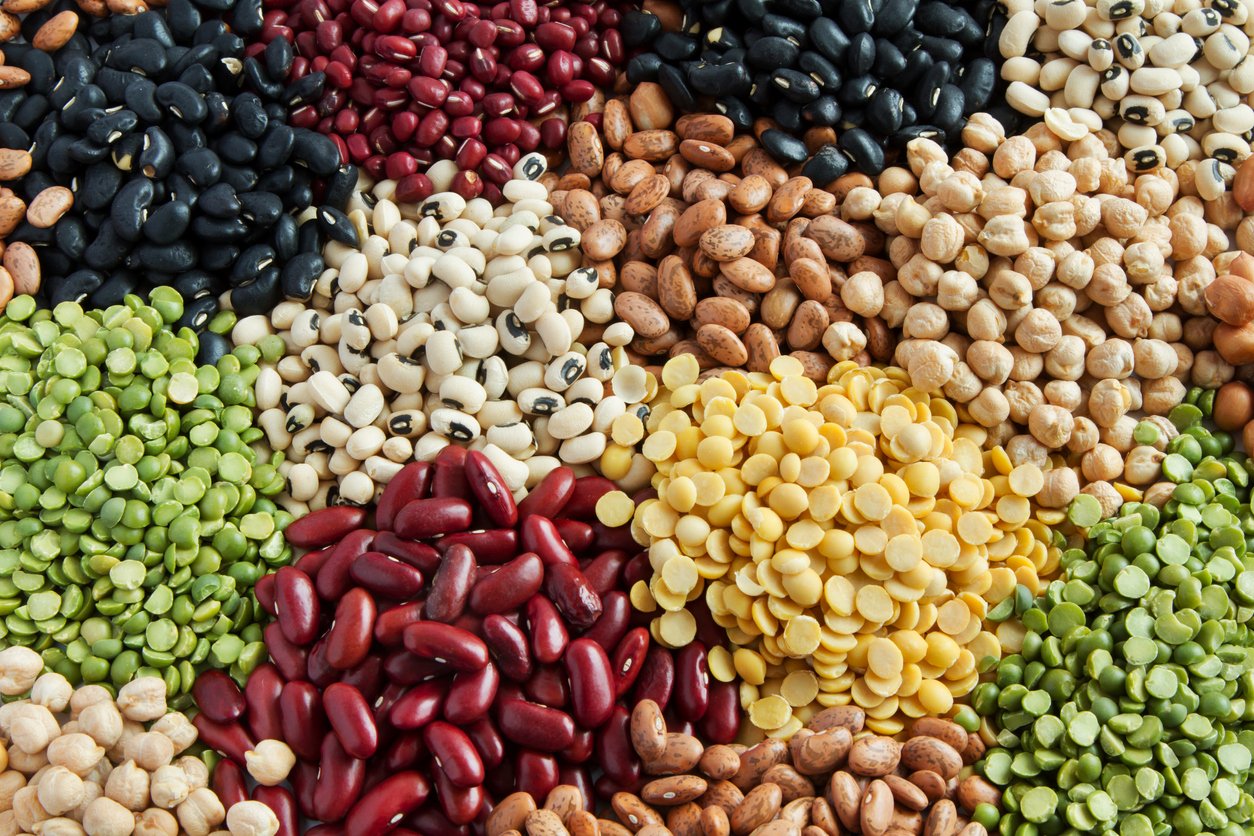
There are over 16,000 members of the bean family, although only a small number of those are edible. And, in fact, only 16 (.1%) of those bean plants are regularly consumed on a global basis — at least, according to data compiled by the Food and Agriculture Organization of the United Nations.
Some of the most commonly known and eaten types of beans are actually all different varieties of the same species. The common bean species (Phaseolus vulgaris) encompasses green beans, Anasazi beans, navy beans, black beans, great northern beans, kidney beans, pinto beans, and cannellini beans.
Other popular types of beans include:
Bean Nutrition: What Are the Healthiest Beans?

According to research by Dan Buettner, author of The Blue Zones: Lessons for Living Longer from the People Who’ve Lived the Longest, beans are one of the foods most associated with longevity.
For optimal health, Buettner recommends eating a cup of beans each day. Few people in industrialized nations today, however, consume anywhere near that amount.
Yet beans can be one of the best sources of clean, whole food, plant-based protein and fiber. For people who might need to boost their protein intake, such as athletes and seniors, eating beans at most meals can be a great boost nutritionally. Cooked soybeans, for example, contain almost 30 grams of protein per cup! And beans don’t have the harmful health effects that animal protein brings, because they don’t have the pro-inflammatory compounds found in meat like arachidonic acid, saturated fat, and carnitine.
Then there’s fiber, a nutrient that many don’t get enough of. Cooked split peas and lentils have approximately 16 grams of fiber per cup!
To put all of this into perspective, many nutrition experts believe that a 150-pound person requires about 54 grams of protein and 40 grams of fiber per day. Most people in developed nations today consume an excess of protein, yet get only about 16-24 grams of fiber per day.
In addition to being excellent sources of protein and fiber, some beans also contain nearly a full day’s worth of iron, and many other vitamins and minerals, too. Black beans, for example, are also good sources of B vitamins like thiamine and folate as well as a variety of micronutrients like magnesium, phosphorus, manganese, and copper. Plus, all beans contain potent phytochemicals that are power disease fighters.
All beans seem to be good for your health. But which beans come out on top in terms of nutrition and antioxidant superpowers? According to NutritionFacts.org, black beans and lentils are two of the healthiest types of beans or legumes, beating out kidney beans, split peas, pinto beans, and chickpeas by twice or even 20 times as much antioxidant activity (in the case of chickpeas).
The Health Benefits of Beans
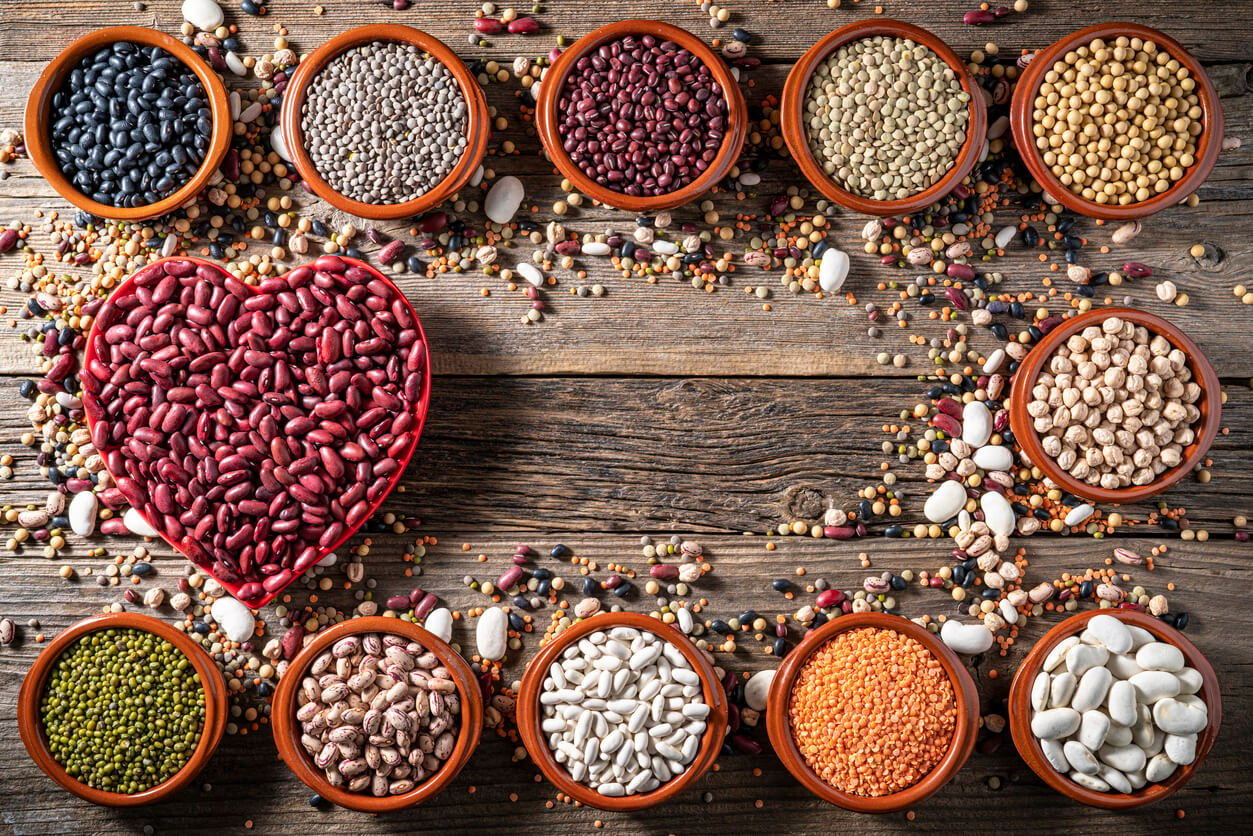
Now let’s dive deeper into some of the specific health benefits of beans and why they deserve a place in your diet.
Beans and Cancer
There is no guarantee against cancer, but a large percentage of cancer risk is due to dietary and lifestyle causes. Beans and legumes can help reduce the risk of many types of cancer in several ways.
One way is through the fiber they contain. Beans and legumes are among the foods richest in dietary fiber. Fiber is essential to help shuttle excess hormones and carcinogens out of the body. Without adequate fiber, these waste products continue to circulate over and over again, potentially causing cancer.
In a study published in the Journal of Nutrition, participants consumed a low-fat, high-fiber, high-fruit-and-vegetable diet, and researchers focused on the recurrence of colorectal adenomas (polyps) — which are a precursor to colon cancer.
After adjusting for all the commonly considered variables, the one factor that made the biggest difference in whether or not participants had a recurrence of adenomas was the number of bean servings they consumed.
Participants that were least likely to have a recurrence of polyps consumed 31 to 233 grams of beans per day.
Beans also contain a compound called phytic acid (phytates). Although phytates have gotten a bad rap in Paleo circles, many researchers believe that dietary phytates may be one of the reasons that people eating a plant-based diet rich in beans and other legumes tend to have lower rates of certain forms of cancer, including breast, prostate, and colon cancer.
Beans and Heart Health
Beans also have proven cardiovascular effects. And many medical associations, including the American Heart Association, recommend beans as part of a heart-healthy diet.
In a study published by Public Health Reports, people without legumes in their diets were at quadruple the risk of suffering from high blood pressure.
And in another randomized control trial published in the Journal of the American College of Nutrition, researchers gave participants just a half cup of pinto beans per day. After eight weeks, their total cholesterol dropped an average of nearly 20 points, and their LDL cholesterol levels dropped 14 points — as much as the level induced by the leading prescription cholesterol drugs!
Are Beans Good for Weight Loss?
If you’re looking to lose a few pounds or just maintain a healthy weight, beans and legumes are one of the best foods you can add to your diet.
A study in the Journal of the American College of Nutrition found that people who ate beans regularly had a 22% lower risk of obesity and were more likely to have a smaller waist than people who didn’t eat beans.
One possible explanation for this is that beans are high in soluble fiber, which slows digestion and makes you feel full longer.
A systematic review and meta-analysis also concluded that the inclusion of beans in your diet may be a modest weight loss strategy and lead to weight loss even without calorie restriction. Because beans are low in dietary fat but high in protein (unlike meat and dairy products, which are also high in saturated fat), their consumption may reduce body fat percentage.
Beans and Blood Sugar
Beans are also low on the glycemic index despite being high in carbohydrates and starches. Unlike simple carbohydrates that may spike blood sugar, beans contain slow digesting starch that triggers a sustained release of glucose that keeps blood sugar balanced.
This was originally known as the Lentil Effect. But it’s now known as the Second-Meal Effect and is the reason the consumption of beans is often recommended for people who have type 2 diabetes, as well as for those who want to prevent it.
Eating beans for type 2 diabetes is supported by dozens of research studies, including a systematic review of 18 randomized control studies. The conclusion reached from the review was that the inclusion of beans and legumes provided improvement in type 2 diabetes markers across the board, including fasting glucose, insulin, and HbA1c.
The Hispanic Paradox
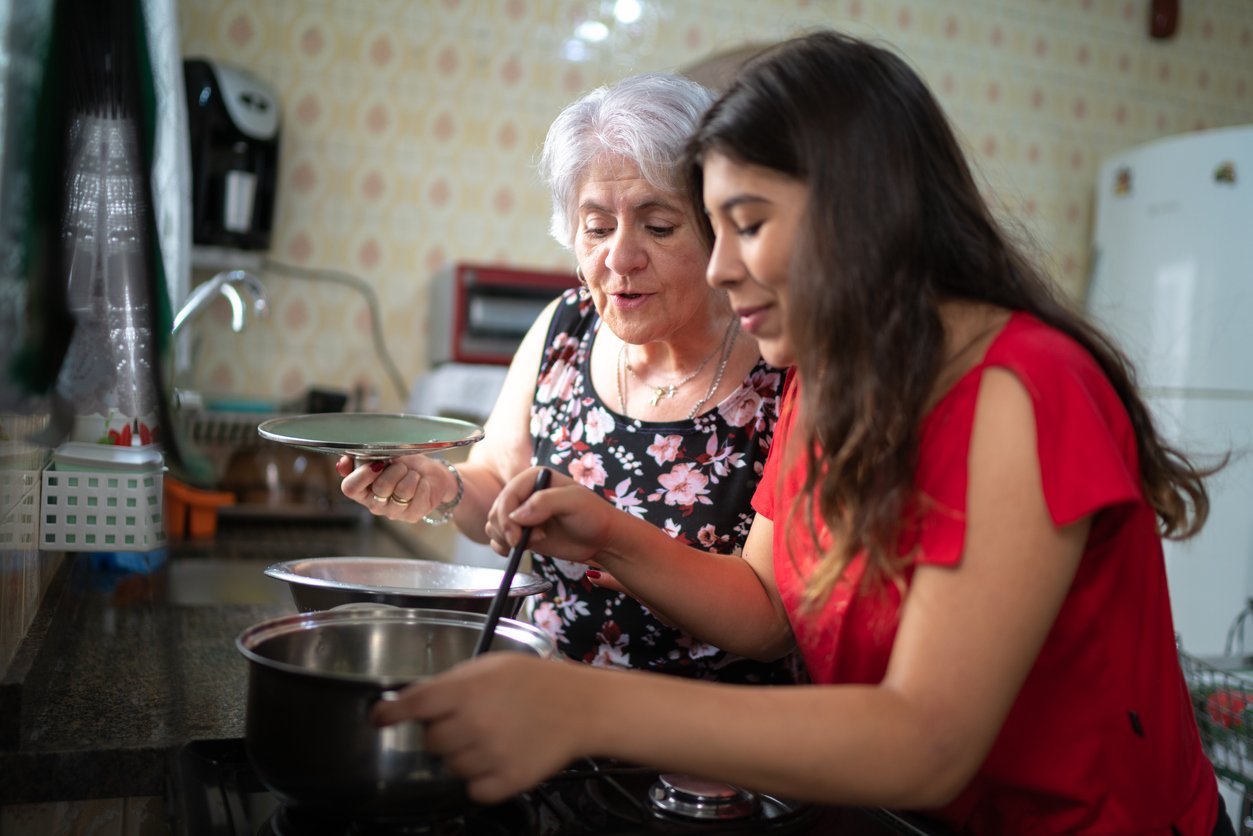
The Hispanic Paradox is an example of the powerful effect of beans. In comparison to national averages, Hispanic people living in the US have lower access to health care, a higher poverty rate, and lower levels of education — all of which are typically linked to worse health outcomes. So you might expect the Hispanic population to also have a lower life expectancy. But remarkably, on average, Hispanic Americans live substantially longer than both white Americans and Black Americans.
Hispanic Americans have a 24% lower risk of premature death — with typically the lowest rates of lung cancer and lower rates of bladder cancer, throat cancer, and colorectal cancer, for both men and women.
Scientists have studied why this might be the case and have determined that diet has something to do with it. Although Hispanics only represent 18.7% of the US population, they eat one-third of the beans consumed. So a high bean consumption may be one of the reasons Hispanics live longer than white and Black Americans.
Bean Side Effects & Controversies
While beans have a number of health benefits, they may not be for everyone. Here are some things to consider when choosing whether to eat certain types of beans or increase your intake.
Soy — The Controversial Bean
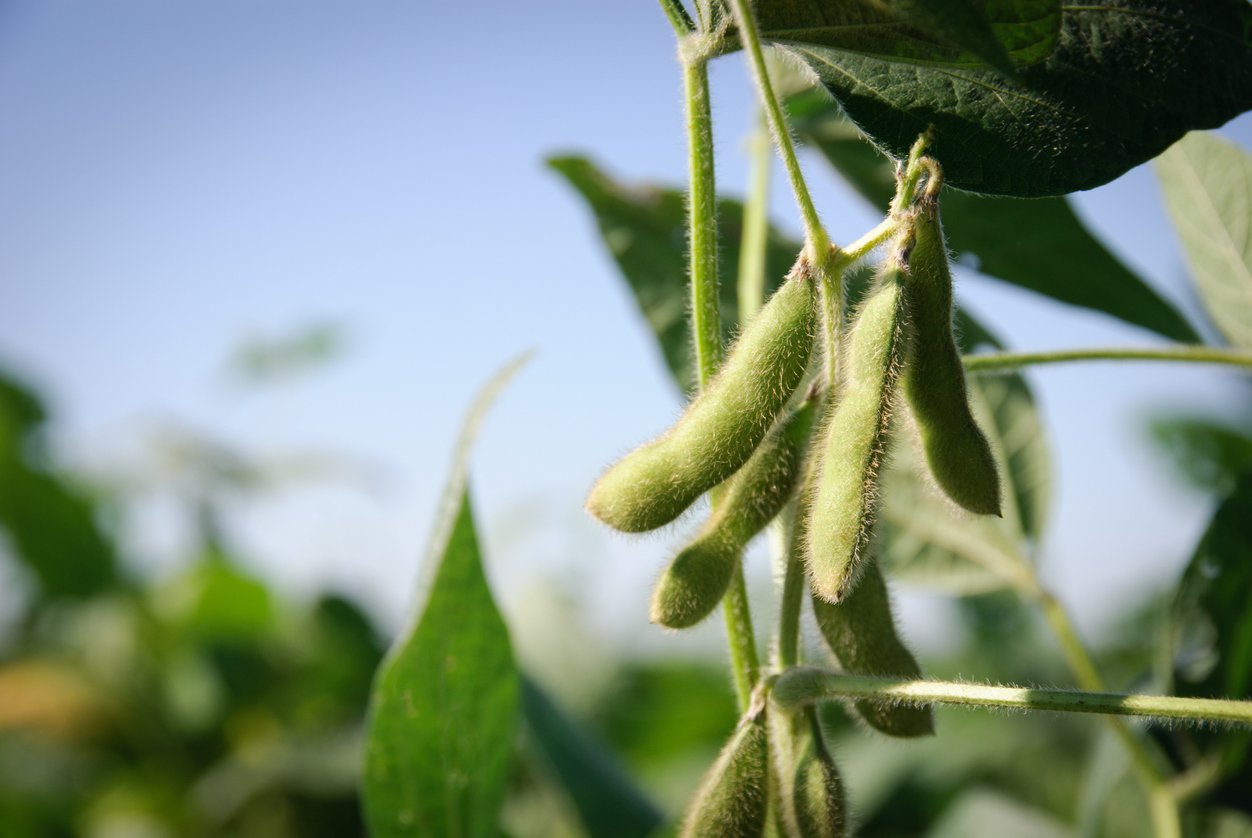
Although accusations of soy possibly causing breast cancer or the feminization of male breast tissue abound, the evidence actually suggests otherwise. In fact, soy, like other beans and legumes, appears to have an anticancer effect on the body and can contribute to good health and longevity.
The Okinawan centenarians that live in one of the Blue Zone regions eat soy foods regularly as part of their traditional diet. And the consumption of moderate amounts of traditional soy foods like tofu, tempeh, miso, soy sauce, and soy milk has actually been shown to be protective against certain forms of cancer, including breast cancer.
For example, in a study published in Cancer Causes & Control, the consumption of soy milk was shown to be associated with a 70% reduction in the risk of prostate cancer.
Similarly, in a study published in the Journal of Clinical Nutrition, women who consumed the most soy had a 29% reduced risk of breast cancer and a 36% reduced risk of recurrence.
And despite many claims to the contrary, soy has not been found to cause the feminizing effects for which it is sometimes erroneously blamed. There are, however, high levels of actual estrogen in dairy, eggs, and meat, and these have been linked to the early onset of puberty, as well as to fertility issues and cancer.
GMO Soy
Some people are also concerned about soy and GMOs. While it’s true that most of the soybeans grown in the US today are genetically modified, the majority of these soybeans go to livestock. The rest may make their way into soy protein isolate, soy oil, and other highly processed soy foods.
If you’re interested in saying no to GMO soy, it might be best to avoid eating meat and processed foods, and instead opt for organic tofu, tempeh, soymilk, and other USDA-certified organic soy products.
For more on separating the soy facts from fiction, check out our article on soy here.
Antinutrients in Beans
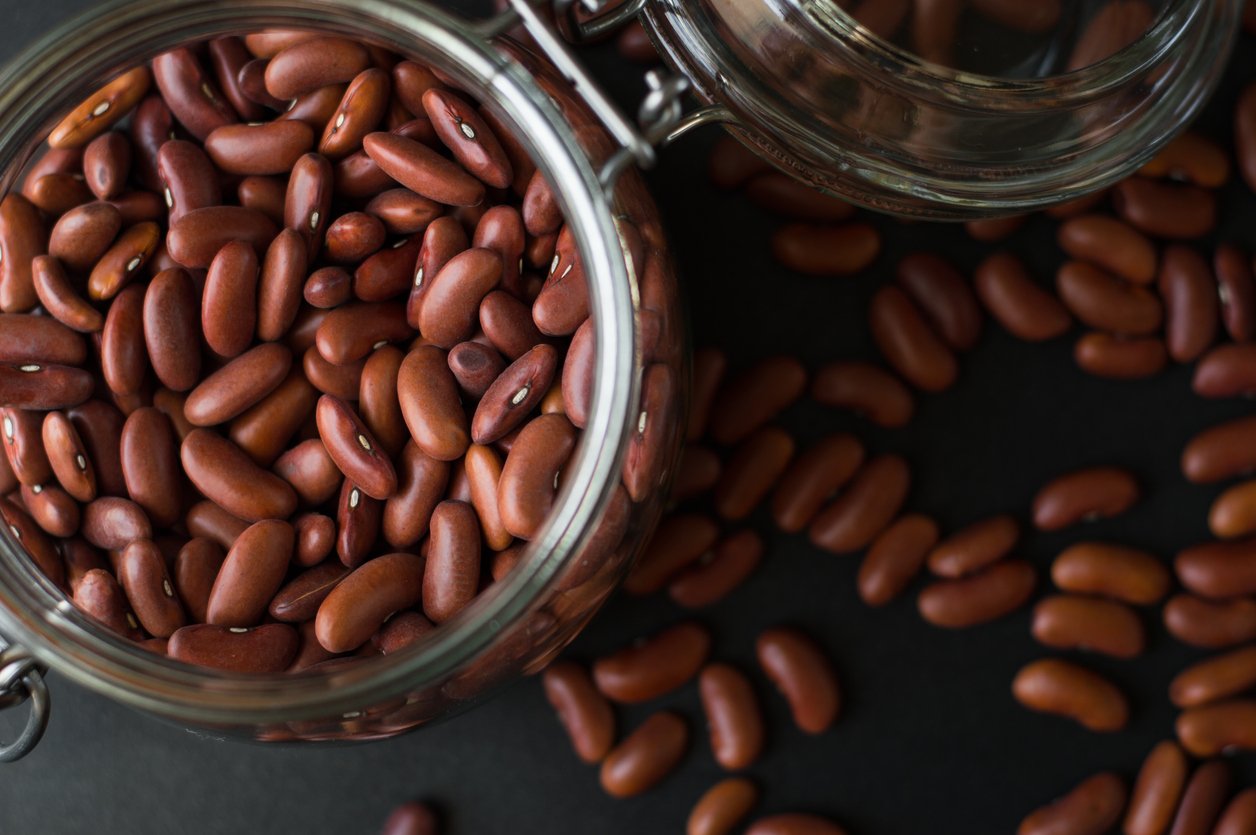
Lectins are proteins present in many plants and concentrated in beans, whole grains, and certain fruits and vegetables. Some people are concerned about lectins, referring to them as antinutrients or even poison. One of the lectins found in kidney beans, for example, called hemagglutinin, can make people sick if consumed raw.
But I don’t know anyone who’s actually in the habit of eating raw kidney beans, do you? It turns out that for most people, lectins and lectin-containing foods are not the enemy. In fact, research shows that lectins may even have health benefits like helping treat digestive cancers.
Phytates are another so-called “antinutrient” in beans you may have heard of. Like lectins, phytates are naturally occurring compounds in plant foods like beans. Phytates are often talked about because they chelate or bind to important minerals like calcium, zinc, and iron, making them less bioavailable to the body. The concern is they could contribute to nutrient deficiencies. But the evidence shows that they, too, actually have a number of health benefits and may help protect us against chronic disease.
Finally, there are also phytoestrogens in soy and other legumes. Phytoestrogens are often brought up in the arguments against soy because there’s a misconception they act like our body’s naturally occurring estrogen. But phytoestrogens, or plant estrogens, are weaker than normal estrogen and can actually bind to or block excess estrogen in the body rather than increase it.
For most people, then, “antinutrients” like lectins, phytates, and phytoestrogens are not a cause for concern when consuming beans. And, in fact, their very existence may contribute to the health superpowers of legumes. However, if you’re still concerned about antinutrients in beans, you may be happy to know that sprouting, cooking, fermenting, and soaking all help significantly reduce their antinutrient levels.
GI Effects of Beans
Although bean-induced tooting is the subject of a lot of jokes (and family anecdotes), some people do have trouble digesting beans. This is one of the reasons that it’s best to soak beans for 24–48 hours (rinsing twice per day) before cooking them. With every rinse, you’ll be draining off oligosaccharides, which are a leading cause of flatulence.
If you do this and still find your digestion less than optimal, you may want to try introducing beans to your diet slowly, starting with one-quarter cup at a time and adding more every day or two to see how your body responds.
Some people also find that lentils and split peas are a bit easier to adjust to than other legumes while offering similar nutritional benefits. Another thing you can try is to take a digestive enzyme with your legumes. A daily probiotic might also be helpful as your body adjusts to them.
Cooked vs Dried Beans
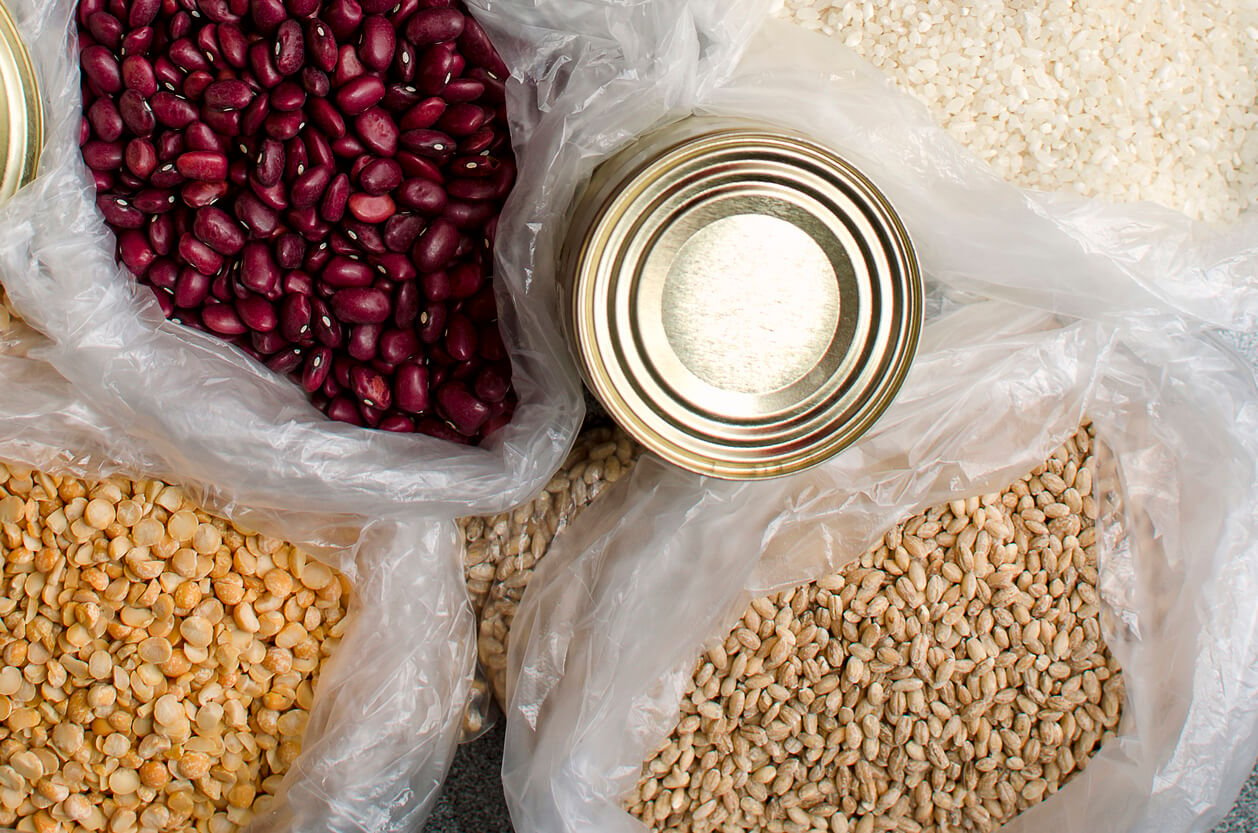
When buying beans you typically have two options, dried beans or cooked beans. So which is the better choice? The answer is — it depends. Cooked beans are usually more convenient because they’re ready to add to recipes. So cooked beans can be a great way to easily add beans to your diet. However, some types of cooked beans have additional issues.
Canned beans sometimes come with added sodium, making them a less healthy choice than dried beans, especially for people with high blood pressure. Fortunately, you can buy canned beans that have no salt added.
Canned beans may also come in cans with BPA linings. BPA is a toxic, plastic-derived chemical that can leach into your food. As of 2020, about 95% of canned foods were made without BPA linings, but it’s unclear if the alternatives are any better for you.
However, canned beans are not the only source of cooked beans anymore. You can also buy cooked beans in non-toxic packaging like Tetra Paks, recyclable cartons, and glass jars, which are better for both you and the environment.
Cooked beans are more expensive than dried beans — about three times as expensive. So it’s much more economical to buy dried beans and cook them yourself. But the trade-off is that dried beans take much longer to cook, which can be challenging with already busy lives. Of course, this can be solved with a little planning ahead.
Ultimately, dried beans are cheaper and, when properly cooked, healthier than canned beans. But if you don’t have time to cook your own, don’t let that stop you from eating beans! Cooked beans, especially in non-toxic packaging, also have health benefits and can still make a fabulous contribution to a healthy, balanced diet.
How to Prepare Dried Beans
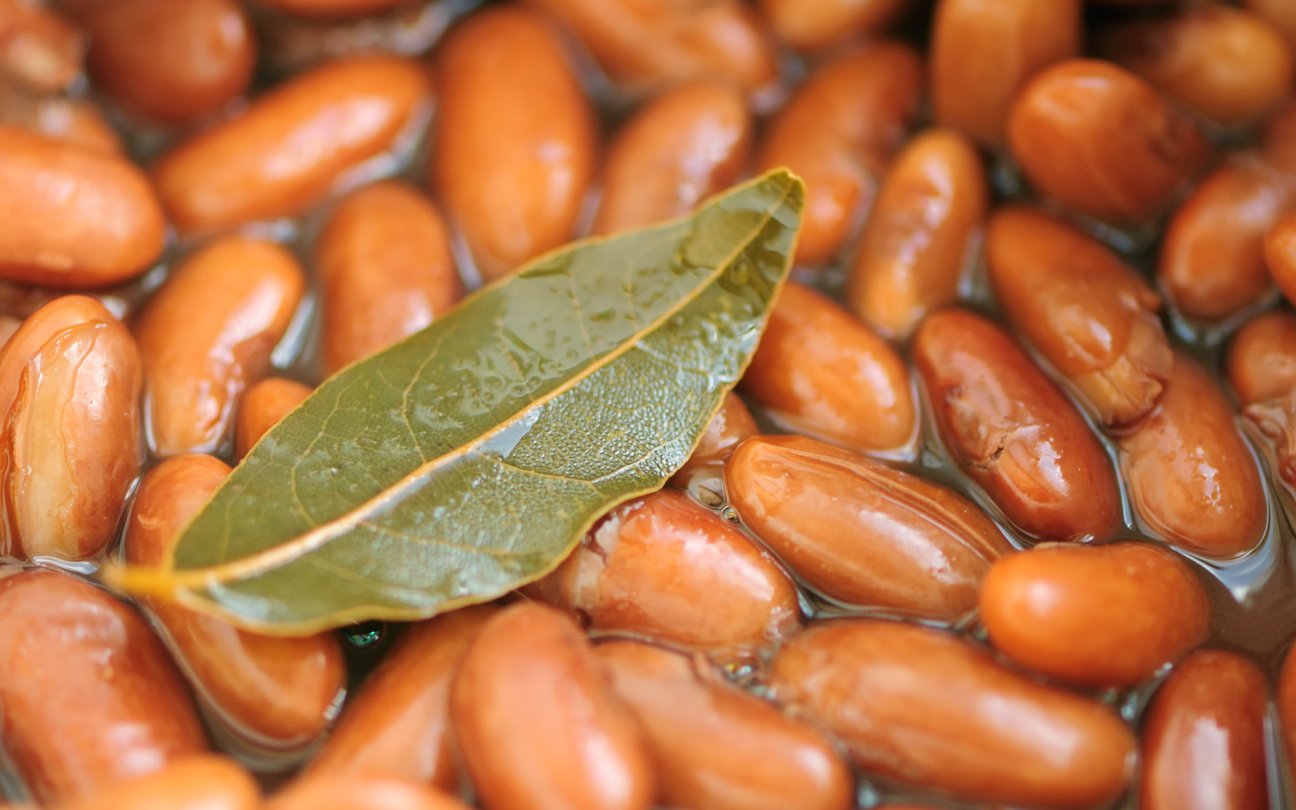
If you do decide to buy dried beans and prepare them yourself, here are step-by-step instructions for how to cook beans.
- First, soak beans for 12–48 hours prior to cooking by placing them in a pot and covering with lots of water — enough to cover by two inches. Discard soaking liquid, rinse, and resoak 2–3x/day, and then rinse and cook thoroughly until tender in fresh water. (Soaking is not necessary with lentils, as they cook relatively quickly.)
- Cook beans using my favorite method, a pressure cooker. They come out perfectly every time. Pressure cookers save time and energy. The pressure also penetrates the tough exterior of beans, making them more easily digestible. But, if you don’t have one, don’t worry. A simple pot or slow cooker can work well, too.
- Add a bay leaf or a strip of dried kombu (a sea vegetable) when cooking beans. Doing so not only adds flavor, but the kombu can help reduce flatulence from eating beans. Kombu contains alpha-galactosidase, which helps break down the oligosaccharides in beans that are responsible for their gastrointestinal effects.
- You can also add spices, such as fennel, cumin, caraway, ginger, epazote, asafoetida, and turmeric to help make beans more digestible.
How to Use Beans in Recipes
Beans are versatile foods that work well as both a plant protein source and a vegetable.
Reap the benefits of beans and legumes by using them in:
- Soups, stews, and chilies
- Blended into dips, spreads, or sauces
- In breakfast scrambles
- As a filling for tacos, burritos, and other Mexican dishes
- Mixed into veggie burger patties
- Mixed into salads
- In hot or cold pasta dishes
- In casseroles, stir-fries, or power bowls
- Desserts like brownies or puddings
3 Delicious Plant-Based Bean Recipes
If you haven’t already begun your love affair with beans and legumes, we have a few recipes that we think might help!
Cowboy Caviar brings beans to new heights. This flavorful dish is best described as a fusion between bean salad and veggie salsa. Bean salsa? Sign us up!
Looking for a new bean to try? One-Pot Butter Bean soup is a quick and easy way to get in your one cup a day. If you have never tried butter beans before, we recommend you don’t miss out on this recipe (not to mention all of the healing veggies that accompany these beans).
Last but not least, Everyday Lentil Lunch is now one of our favorite go-to lunch recipes (and we love to share it as often as we can), thanks to the delightful combination of lentils, grains, herbs, and spices. With so many ways to use beans and legumes, we’re certain you’ll find your favorite go-to ways to enjoy them!
1. Cowboy Caviar
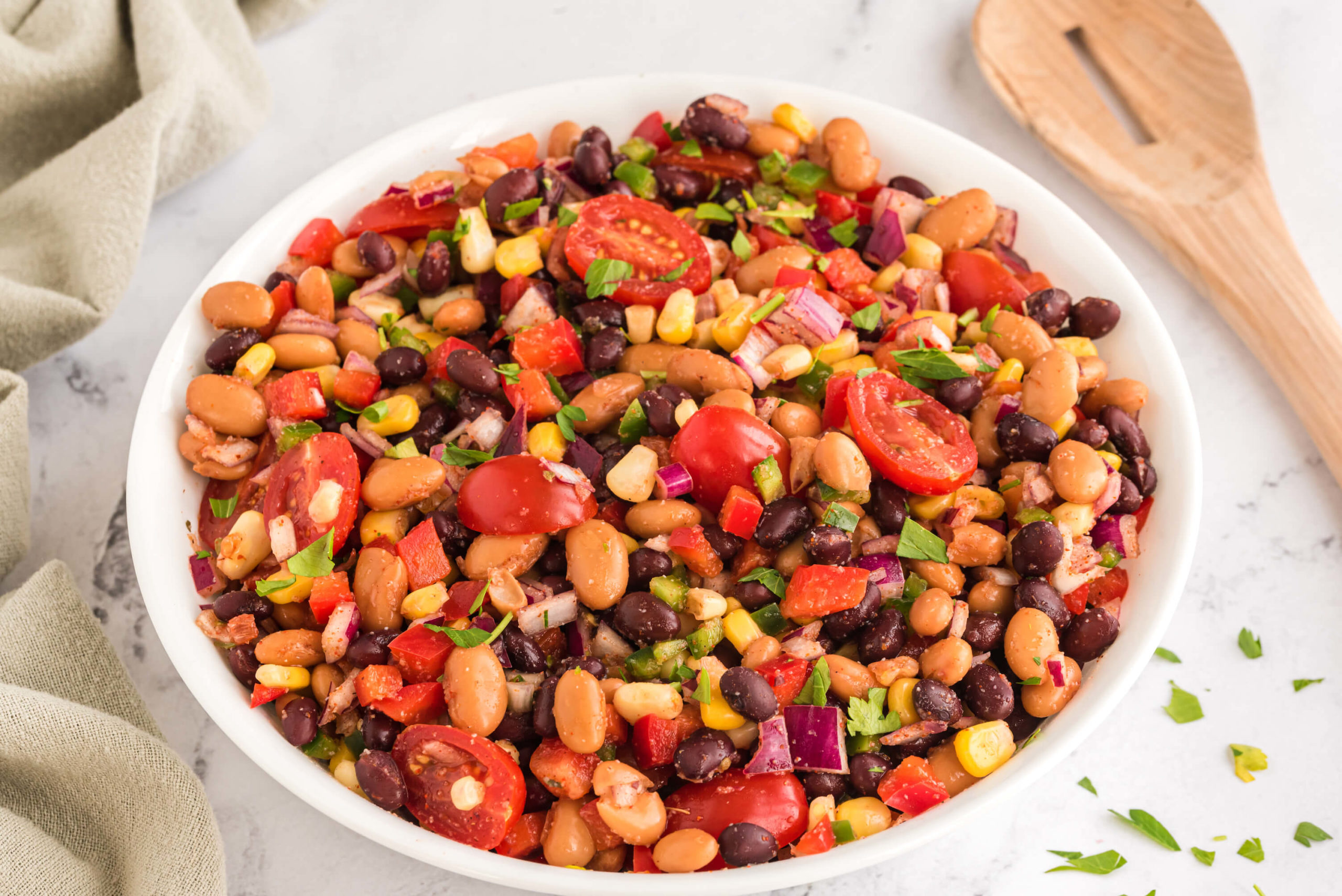
The beauty of beans is that you can transform them in a variety of ways to satisfy any craving, pallet, or nutritional need. Cowboy Caviar can best be described as a fusion of bean salad and veggie salsa. They come together for a gorgeous and colorful bowl of plants that is teeming with fiber, protein, phytonutrients, and of course plenty of flavors. Enjoy it as a taco filling, use it as a salsa, or top it on avocado toast.
2. One-Pot Butter Bean Soup
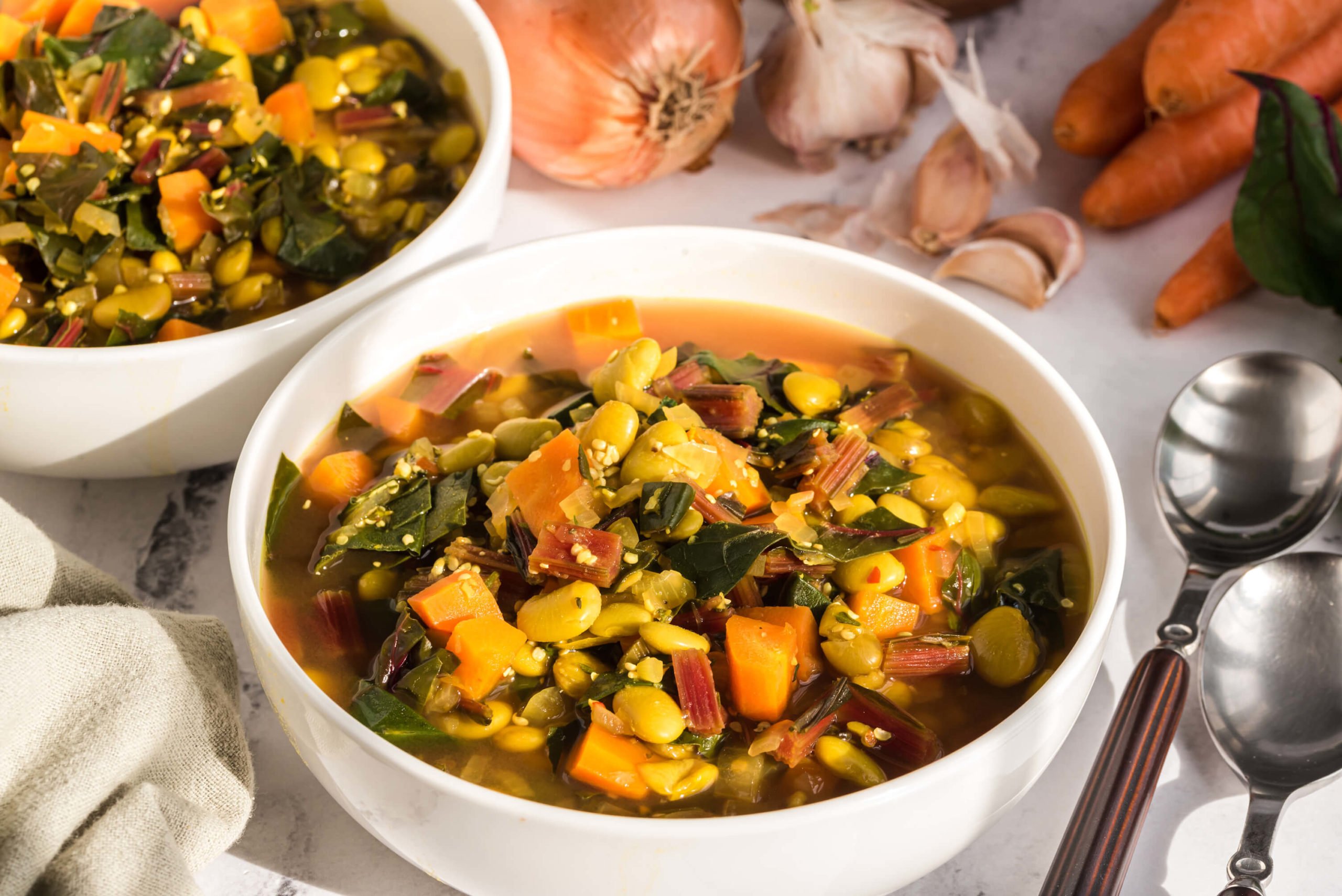
One-Pot Butter Bean soup is a quick and easy way to get in your one cup a day! Butter beans (also known as lima beans) are not often highlighted as a bean of choice in many dishes (unless you live in the South), so we are giving this bean its chance to shine. Butter beans have a starchy yet buttery texture (hence the name), and are a great source of folate (and other B vitamins), copper, magnesium, phosphorus, manganese, iron, protein, and of course fiber! With the addition of carrots, onion, and Swiss chard, you’ll have a super nourishing soup with plenty of potent phytochemicals to help keep you healthy.
3. Everyday Lentil Lunch
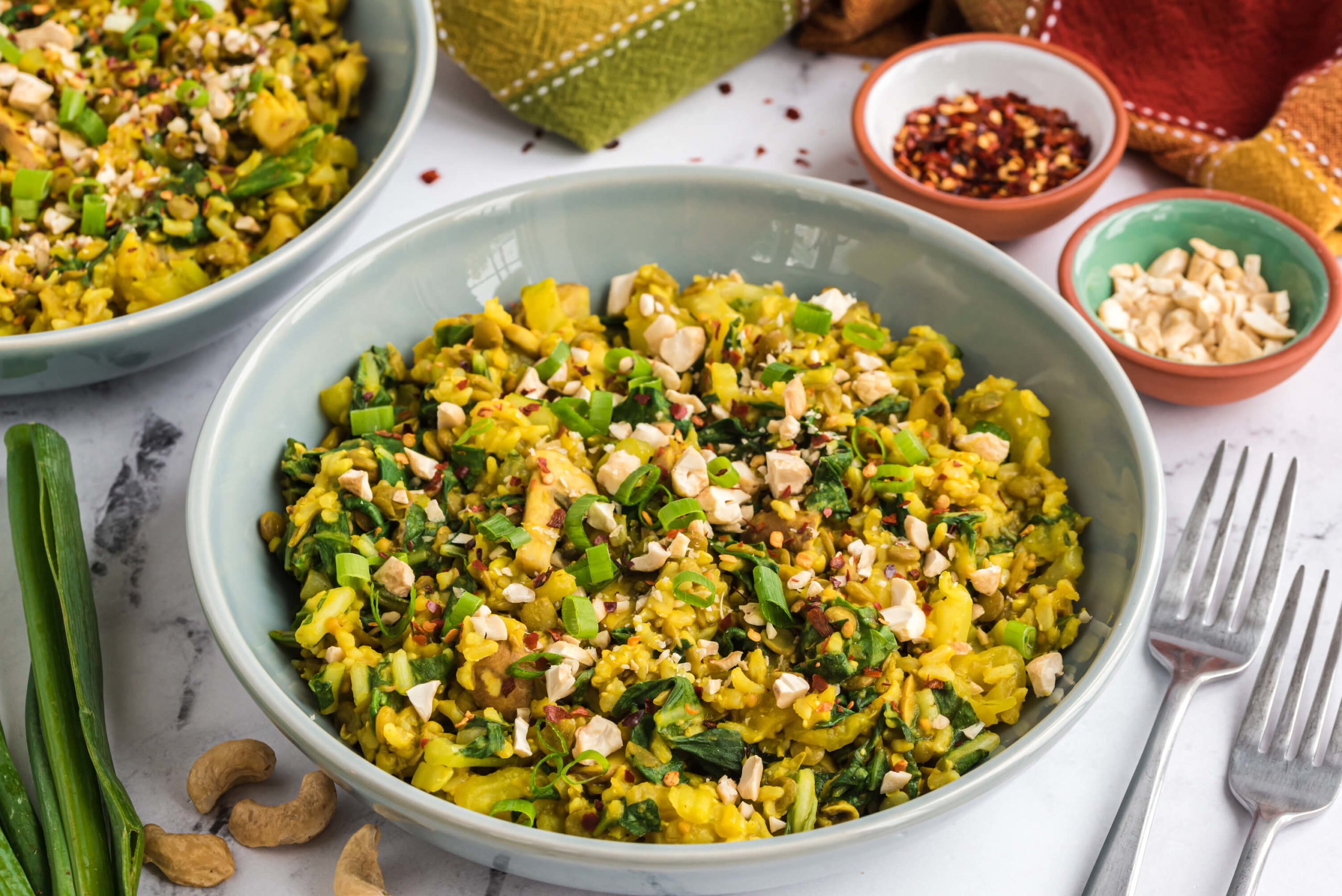
Everyday Lentil Lunch is one of our favorite go-to lunch recipes, and we love to share it as often as we can! Lentils are a gold mine of nutrition. They have approximately 16 grams of fiber and about 18 grams of protein per cup. Plus, when you consider the nutritional value — the antioxidant, anti-inflammatory, and neuroprotective effects lentils have — you can see why we’d advocate for a cup of these health-promoting legumes a day. What’s more, this delicious dish comes together easily, has a variety of bright flavors, and is super satisfying. We’d recommend preparing extra lentils and brown rice to have on hand, as this could become your new lunchtime staple every day of the week.
Beans Are Good for You!
Most people I know are looking to save some money. And we all know that grocery costs can add up. Centering meals around beans can be a simple, affordable solution to eating healthier. Plus, you’ll get all the benefits of beans described above.
At just a couple of dollars per pound for most organic dried beans, it’s easy to feed even a large family a healthy, affordable meal featuring the lovable legume. Beans are also convenient. It’s easy to keep a variety of dried and canned beans in the pantry for making a broad range of bean recipes. There are so many exciting ways to prepare beans and reap their benefits.
We hope we’ve given you a few new ideas to incorporate more beans and legumes into your plant-powered diet and lifestyle.
Tell us in the comments:
- What are your favorite ways to prepare beans and legumes?
- What new bean recipe do you want to try next?
- What do you think about the health benefits of beans?



